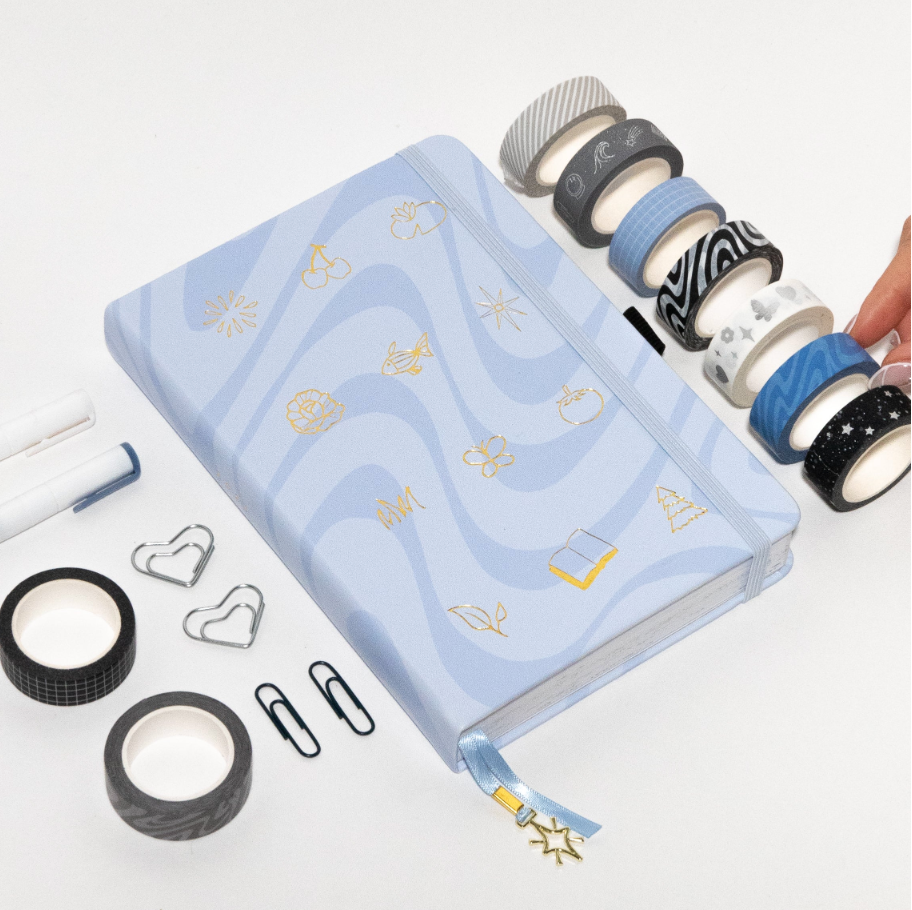Sometimes a product is so good, it’s hard to imagine its absence.
Consider something as simple as a coffee mug: its design lets you drink hot liquid without burning your fingers. The standard coffee mug evolved over centuries, but efficient product design can fast forward this process.
Learn how effective product design can help you create physical goods, websites, apps, and other software that delight your customers and fulfill your business goals.
What is product design?
Product design is the process of researching, brainstorming, developing, testing, and iterating products to meet precise user needs. It covers every aspect of a product’s lifecycle, from conception to manufacturing, with the goal of pleasing customers and fulfilling business targets.
Why does product design matter?
Product design is central to creating products that solve real issues. It’s how you release products on the market that appeal to your target audience. Good product design also influences user experience, brand identity, innovation, and competitiveness.
It creates a better user experience
Good products are built around good user experiences. They are both functional and enjoyable, delighting customers and encouraging them to buy more.
Think about a garlic press that not only minced garlic but also removed its peel, an otherwise frustrating task. Thoughtful design like this improves upon the standard experience. It builds a strong brand identity.
Good product design shapes how people see your business. It reinforces your values and appeals to your audience’s preferences and needs.
How to create effective product designs
- Define the problem
- Conduct user research
- Brainstorm
- Design a prototype
- Do usability testing
- Finalize the design
1. Define the problem
Begin the product design process by defining the problem your product solves. Describe how your product solves it, and for whom. This is your value proposition—a simple phrase outlining the product’s key benefit.
At this point, you should also set preliminary success criteria: What are your business goals for the product, and how will you measure progress toward them? Determine key performance indicators (KPIs) to evaluate success.
2. Conduct user research
Understanding user needs from the outset can save money down the line by minimizing the likelihood of redesigns. User research can also help you evaluate market potential and create internal stakeholder buy-in by demonstrating the product’s value to its target customers.
Use the following methods to understand your target audience:
Online surveys
Surveys are great for conducting user research at scale. Try to keep them simple, use rating scales that turn customer opinions into quantitative data (“On a scale of 1to5, how likely are you to …”). Round out your surveys with a few open-ended questions to generate meaningful details (“What features would you most like to see in a new product of this type?”).
User interviews
In-person interviews with members of the target audience allow researchers to observe behavioral cues and ask follow-up questions. Talking directly to consumers can help you hone your product’s positioning.
Buyer personas
Buyer personas are fictional depictions of your ideal customers, representing segments of your target audience. Creating buyer personas based on research and analysis helps you understand user needs, motivations, and behaviors.
Give your personas names, jobs, and concerns, then consider why each might be interested in your product. This process can transform abstract market data into tangible representations of your ideal customers and help you tailor your product to them.
Competitive research
List out direct (similar products) and indirect (different products that satisfy the same need) competitors. Examine their products closely. Look at:
- Product features and construction
- Value proposition
- Branding
- Target market
- Price
Conduct a SWOT analysis (strengths, weaknesses, opportunities, threats) for each major competitor. This will help you understand where you can outperform them, identify market gaps and potential challenges, and create a product strategy that emphasizes your product’s unique features.
3. Brainstorm
Use the brainstorming process—a creative group discussion for generating ideas—to refine your product vision based on the results of your user and product research.
There are no bad design ideas at this stage. The freedom to pitch ideas without fear of judgment creates an environment where participants are comfortable being creative. Set a limited time for the session, and focus on quantity over quality. Once the brainstorming session is over, refine and organize your ideas until you’re left with only the best. When the team is aligned on the best path forward, it’s time to test the hypothesis.
4. Design a prototype
The process of creating prototypes and mockups varies depending on the kind of product you’re making. If you’re designing an app, for example, you may want to create a wireframe—a low-fidelity, simplified outline of the interface’s layout and structure—that you can test with real users. Consider user interface (UI) best practices when designing.
If you’re making a physical product, create a functional prototype—a working model that showcases its design and functionality. You can build one yourself or outsource the work to a prototyping supplier. Creating a few different prototypes at once lets you gather user feedback on multiple versions of your potential product.
5. Do usability testing
Collecting feedback as participants use your product can also be called usability testing. This stage in the design process typically requires a broad range of users from your target audience to get a sense of what works and what doesn’t. It also helps you map out the user journey so you can understand how real people interact with your product.
There are two types of usability testing you could run:
- In-person: In-person tests are conducted in a controlled setting. Participants are given task assignments to perform with your product. You observe and take notes, then ask for feedback after.
- Remote: With remote testing, you’ll ship the product to participants and introduce the testing via videoconferencing. Participants can keep digital diaries or video logs of their experiences, which your team analyzes after the test is finished.
📚Learn: Product Testing: Examples and Tips for 2024
6. Finalize the design
Now’s the time to lock in the product’s specifications, incorporate additional changes, and ensure your product meets expectations and standards. The goal is to resolve any issues that could affect the product’s functionality, safety, or appeal.
You’ll also want to finalize details with suppliers and prepare for manufacturing. Choose materials, confirm dimensions, and refine the product’s aesthetics based on your user testing.
Examples of great product design
Healthy Roots Dolls
Yelitsa Jean-Charles founded Healthy Roots Dolls based on a market gap she noticed while studying at the Rhode Island School of Design. Her goal was to close the racial gap in toys and overcome the detrimental impact of underrepresentation on Black girls’ self-esteem.

A crowdfunding campaign introduced the first doll and helped the brand secure funding, partnerships, and a Target store presence. This initiative shows how good product design can go beyond aesthetics, embedding social responsibility and cultural awareness into its core. This makes the dolls more than toys—they’re tools for forming positive identities.
👉Read: She Built a Toy Brand To Fill a Market Gap—And Teach a Generation To Love Their Hair
MiiR
After a life-altering skiing accident, Bryan Papé was inspired to start stainless steel drinkware company MiiR. The accident led him to consider his legacy and sparked his desire to establish a socially meaningful business.
The MiiR team takes a human-centered approach to product design, focusing on how products feel in hand and fit into everyday arrangements, like car cup holders. Inspired by Japanese and Scandinavian designs—often described as "addition by subtraction”—MiiR products embody simplicity and functionality.
MiiR continually seeks to improve and innovate its product designs and business practices. The team collaborates with industry peers, learning from them and sharing their insights so MiiR’s social and environmental impact extends beyond its products.
👉Read: How MiiR Built a Generosity-Driven Business
Amanda Rach Lee
Amanda Rach Lee started off creating general lifestyle videos but later found her niche in bullet journaling.
Through her YouTube channel, Amanda cultivated a large following by consistently posting engaging content that resonated with her viewers. Building this community provided an essential, ready market when she transitioned into business.
Amanda’s deep involvement in bullet journaling and her passion for stationery guided product development. She designed product lines she loved and knew her audience would appreciate, such as notebooks and washi tapes.

Amanda continues to engage with her community and incorporate feedback into her product development process. She also launches new projects and explores fresh product ideas, keeping her business dynamic and relevant.
👉Read: Amanda Rach Lee’s Journey From YouTube to Business Owner
Common mistakes to avoid in product design
Even though you’re now a pro at product design, it’s worth safeguarding against failure by avoiding these common mistakes.
- Failure to iterate. If your usability testing indicates a problem with your product, move back as many steps as necessary to correct it. Adjust your prototype and continue testing it with users until you’re confident it perfectly addresses their needs.
- Vague business objectives. Fuzzy goals prevent a thorough evaluation of success. Before finalizing your product design and committing it to market, set clear key performance indicators (KPIs) that will show whether or not the product meets your business goals.
- An unoriginal selling proposition. Never create a product similar to a competitor’s without adding value. A unique selling proposition (USP) is what sets your product apart from the competition. Study your target market and use your product to address their unmet needs.
Great product design is key to business success
A good product starts with great design. It’s how you wow your customers and keep them coming back. If you follow the above steps closely, you’ll be well on your way to producing an exceptional product that aligns user needs with business interests.
Product design FAQ
How can I ensure that product designs align with my brand?
Establish clear brand guidelines that distinguish your brand, then follow those guidelines when designing your product. Involve your design team in the brand development process, and offer feedback and direction as they test out product designs.
What types of tools do product designers use?
Product designers may choose from a variety of tools, depending on their goals. 3D modeling software like Autodesk Fusion 360 or SolidWorks, graphic design software like Adobe Creative Suite, and digital prototyping and wireframing tools like Sketch, Figma, or Adobe XD can all be useful. They may also employ Google surveys and SWOT analyses to better define the “why” behind products.
Is product design the same as UX design?
Product design and UX design are related disciplines, but UX designers focus specifically on users’ hands-on experience. The product designer’s role also involves project management, developing business KPIs, and conducting audience research.
What does a product designer do?
Product designers generate ideas for products like cars, appliances, and toys. They sketch, prototype, test, and refine to create useful, attractive, and accessible consumer products.
How do you become a product designer?
Product designers have a formal design education (like a degree in industrial design, graphic design, or something similar) and practical experience. They also need to build a strong portfolio, learn design tools, and understand user-centered design principles.
What is the history of product design?
Product design became a formal field during the Industrial Age, introducing a systematic approach to the mass production of functional, beautiful products. In the 20th century, iconic designers like Raymond Loewy and Dieter Rams redefined the field with designs focused on simplicity and function.
How much does product design cost businesses?
The cost of product design can range from a few thousand dollars to hundreds of thousands of dollars or more. Ecommerce businesses should consider their budget when planning product design projects.





